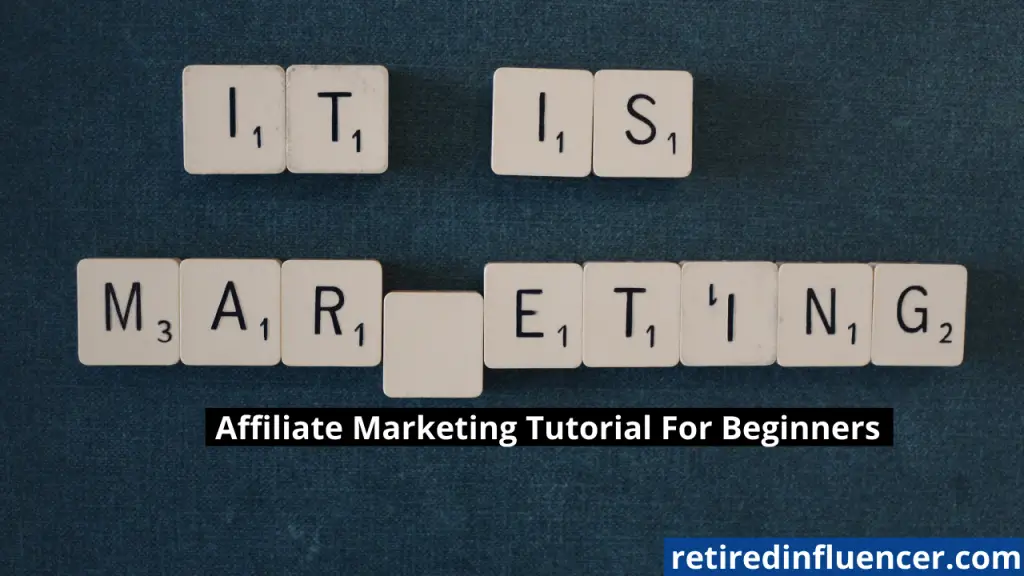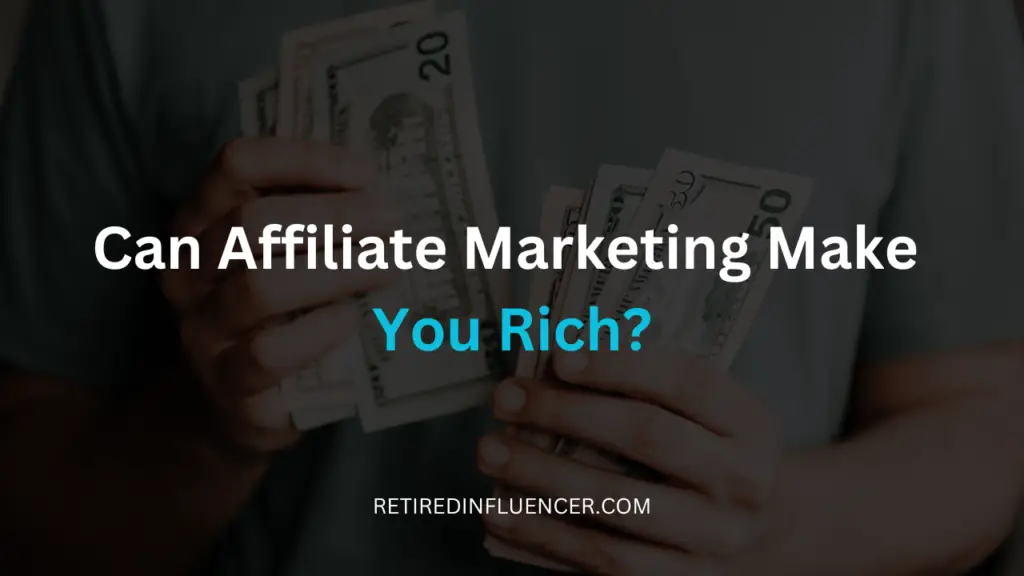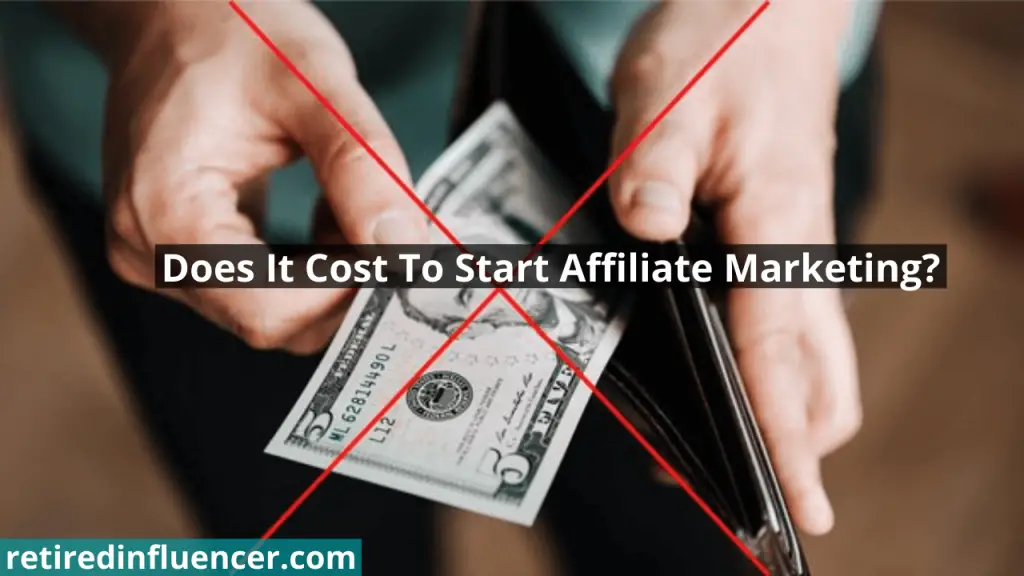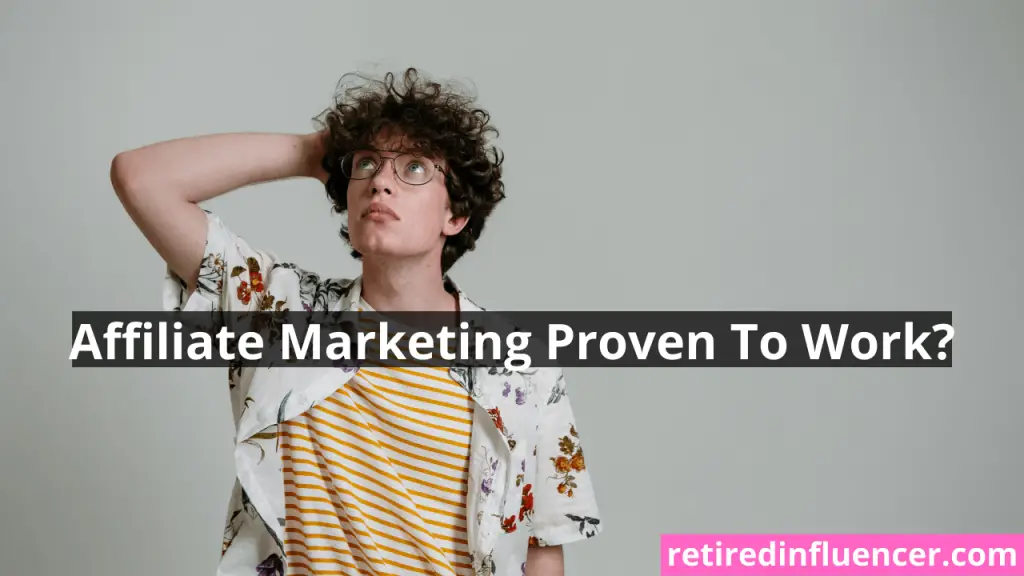In affiliate marketing, a sales funnel is an online sequence that takes or guides online traffic (potential or ideal customers) through a sales sequence of simple web pages and helps you improve conversion and make more sales.
In this article, I’m going to walk through how a sales funnel works, the benefits and challenges of a sales funnel, and a step-by-step how to build high-converting sales funnels to increase your affiliate marketing sales.
It’s going to be fun. Buckle in.
Table of Contents
What Is A Sales Funnel In Affiliate Marketing?
An affiliate marketing sales funnel is simply a marketing term or tool that your potential or ideal customers go through when they want to purchase your product or services.
In other words, an affiliate sales funnel is simply making a funnel to promote affiliate products or services or to generate leads for your affiliate business.
Most affiliate marketers use a sales funnel primarily to sell affiliate products or services.
That said…
For you to sell anything successfully using a sales funnel, you’ll need to take your ideal customers through the right stage.
There are “4 stages in a sales funnel” that you need to take your potential customers through.
- Awareness: This stage is where you catch your ideal customers’ attention. This could be content you create on your blog, YouTube channel, etc. At this stage, the customer is aware that you exist.
- Interest: As the customer knows you exist, they’ll start running research about your business and the products you promote. During this stage, you don’t want to be too salesy, it’ll push the customer away. Rather, you want to continue adding value to build trust with them.
- Decision: At this stage, as the customer begins to know, like, and trust you, this is the best time to promote or recommend your product to them. Because they know and trust you, and they can’t resist your offer.
- Action: Here, as they opt for your product, they become part of your business’s ecosystem. Now, as they become part of your business ecosystem, don’t stop there, focus on keeping the customer. I mean you need to continue adding useful value to their life to build a strong long-term relationship with them.
How Does A Sale Funnel Work In Affiliate Marketing?
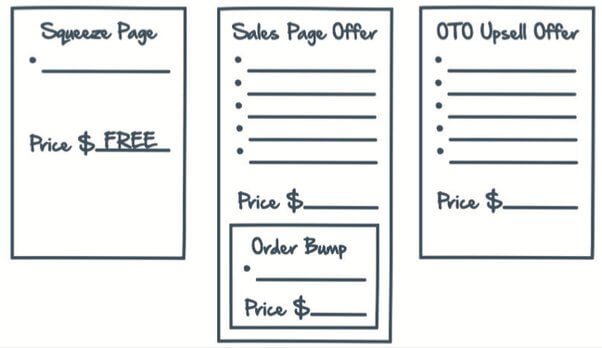
How a sales funnel works in affiliate marketing is quite simple:
Affiliate marketers use a sales funnel to introduce products or services to potential customers or convert leads into buying customers.
A sales funnel’s primary objective is to generate leads for a marketing campaign or to sell a good or service.
A sale funnel starts with marketing and sending potential customers to a landing page where they give their email addresses for a free item or information.
Once they opt-in their information, they’re inside a sales funnel.
Then, the affiliate marketer follows up with them with quality email content and useful values through an autoresponder.
The purpose of the email content is to first build TRUST and RELATIONSHIPS with the customer.
After the hook or the value is delivered to build trust with the customer…
There’s usually a product or service for sale to offer the opportunity of getting more value.
If the customer purchased the product…
The affiliate marketer then offers a more expensive product or service that offers greater value than the first one.
What Are The Type Of Sales Funnel In Affiliate Marketing?
There are 3 types of funnels in marketing: Conversion funnel, lead generation funnel, and promotional funnel.
- Conversion Funnel: This type of funnel is used to sell or promote products. The conversion rate of this funnel needs to be at least 1%.
- Lead Generation Funnel: This funnel allows you to capture people’s email addresses and build your email list. People who want more info on a topic submit their email contact to get an offer, free checklist, free guide, etc.
- Promotional Funnel: This type of funnel allows you to host live webinars to inform your audience about your product or service.
What Is A Typical Example Of A Sale Funnel In Affiliate Marketing?
Here is what a typical sales funnel in affiliate marketing looks like:
A sale funnel or landing page should have one single focus or message and be visually appealing.
It should have a clear message.
What Makes A Good Sales Funnel For Affiliate Marketing?
Here are a few things that make a “good sales funnel for affiliate marketing”:
- A good affiliate sales funnel starts with sending visitors directly to a landing or capture page where they opt-in their email addresses for a free item, this allows the marketer to build an email list.
- A successful sales funnel provides increasing value to potential clients at each stage of the procedure.
- A good affiliate marketing sales funnel has multiple affiliate offers within it. This helps the affiliate to only focus solely on marketing the landing page.
- It offers effective solutions to the client’s challenges.
- It helps increase the leads (actions taken by the visitor).
- It makes you the go-to person or expert in your field for advice or a reliable viewpoint.
- A good affiliate sales funnel helps you gain the trust of customers so they will continue to do business with you.
What Are The Importance Of Having A Sales Funnel For Affiliate Marketing
There are several reasons why you need to build a sales funnel for your affiliate marketing business.
Online people don’t usually purchase a product the first of see it, creating an effective sales funnel can be an excellent way to remarket that same product to them over and over again until they’re ready to purchase it.
“Creating a sales funnel for your affiliate business is the foundation for attracting and converting new customers, and keeps them coming back for more”.
Below are a few “benefits of a sales funnel for affiliate marketing”:
- A Sales Funnel Helps Increase Sales
- It Helps Improved Conversion Rates
- It Leads To Better ROI
- Improve Relationship
- Streamlined Marketing Strategy
A Sales Funnel Helps Increase Sales
A sales funnel will help you set up and optimize the entire AIDA process, which can increase the average order and lifetime value of customer value, leading customers seamlessly from awareness to purchase
Which over time, can lead to higher revenue and profitability in your affiliate business.
It Helps Improved Conversion Rates
If you’re trying to generate sales in your business, a well-designed sales funnel is going to allow you to guide or direct potential customers through the buying process.
This can lead to improved conversion rates.
By identifying your potential customer’s needs and providing useful solutions that they need.
And also providing them with the right info at the right time.
Over time, you potentially increase your product sales.
It Helps Better Understand Your Customers
When you want to generate more sales or grow your business, you need to understand the needs and behaviors of your ideal customers.
And by building a sales funnel, you can potentially gain a deeper understanding of your ideal customers.
And this can help you know which marketing strategy to utilize to improve the overall experience of your ideal customers.
It Leads To Better ROI
A well-designed sales funnel can help you track and measure the effectiveness of your marketing campaign.
By knowing where your potential customers are dropping off in the funnel…
You can identify areas where you need to make changes and optimize your marketing strategy for better ROI.
Improve Relationship
A well-designed sale helps move relationships with your ideal customers from curiosity to enlightenment to commitment.
Streamlined Marketing Strategy
By focusing on the four stages of the sales funnel (thus, awareness, interest, decision, and action), you can create a more streamlined and effective marketing strategy.
This can help you prioritize your overall marketing campaign and ensure you’re delivering the right message to the right audiences at the right time.
How To Build A Converting Sales Funnel For Affiliate Marketing
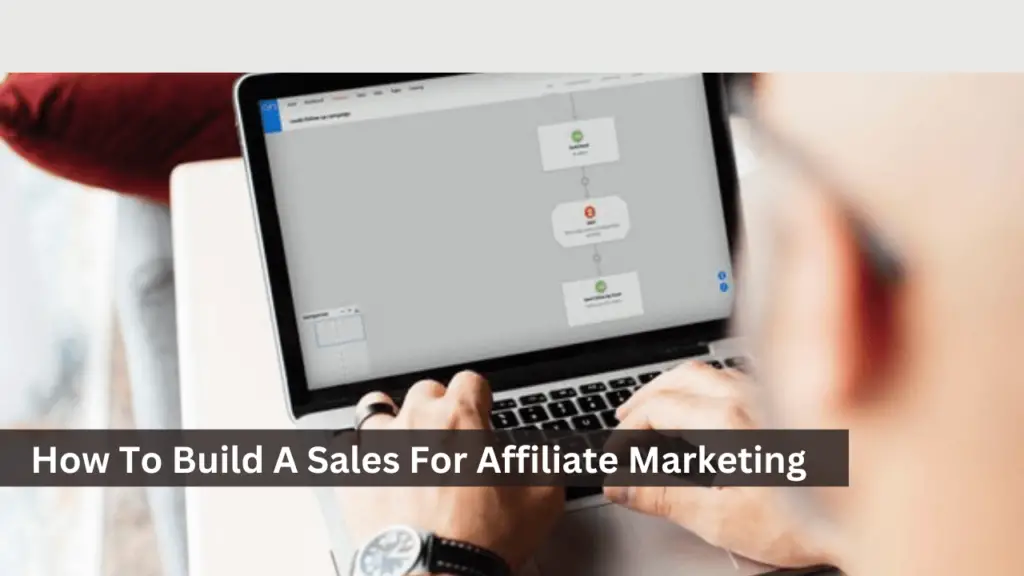
Speaking of a sales funnel, it’s a series of steps that a potential or your ideal customer goes through to become a paying customer or simply a buyer.
Why a sales funnel? Well, it’s called a funnel because it narrows down a large number of potential customers into a smaller group of paying customers.
That said…
Here Is A Simple Step To Build A Converting Sales Funnel For Affiliate Marketing:
- Decide On A Niche
Everything starts with a niche. So what’s a niche? A niche is simply a topic or an industry you’re interested in, passionate about, or knowledgeable of.
- Define Your Target Audiences
Once you’ve decided on your niche, the next thing is to identify who your target audiences are, where they mostly hang out online, and what their needs or pains are.
Knowing this will help you create content that speaks directly to them.
- Pick A Product
As you know what problems and pains your ideal customers are facing, you want to research and pick a product that aligns with their needs.
I mean a product that’s of good quality and will help solve your audience’s problems or pains.
- Create Awareness
Now that you know who your targeted audiences are and what problem or pain they need help with, and you’ve picked a product that you think will help solve those problems for them.
Next, you want to generate awareness about your product and this can be done through social media advertising, content marketing, etc.
- Sign Up With A Good Funnel Builder Service
To create a sales funnel for your affiliate marketing business, you need a funnel builder tool. You should sign up for a good sales funnel builder service that suits your interests and business model.
There are so many funnel builder tools out there. I recommend using GetResponse.
- Create A Compelling Landing Page
As you’ve signed up for the sales funnel builder, you’ll have the opportunity to create a landing page for your business or product.
The landing page is like a storefront of your product. A potential customer will land on this.
On this page, you should provide relevant info about your product or what they’re going to get with a clear call to action.
I mean, include a few key features to up your chances of capturing customer information.
In addition, the landing page should be visually appealing.
- Offer Freebies
On the landing page, you don’t want to get customers to sign up directly for a product.
Rather, you want to offer them something of value for free (a free item) so you can capture their personal information (email addresses). The goal is to get them to join your email list.
- Create A Thank You Page To Introduce Yourself To Your Audience
After the customers have opted in, you immediately want to send them to a ‘thank you page’ where you introduce yourself to them and why you’re the right source.
I recommend you add a video to your ‘thank you page’. Why? A recent study shows that having a video on your thank page can increase your conversion rate by 80%. So try including a video.
- Drive Traffic To Your Landing Page
Remember, your goal is to get quality and targeted leads or clients for your business.
The aim of hoping people will find you naturally and sign up for your email list is over.
You need to work on advertisements to get people to your landing page.
That said, there are two best ways to direct traffic to your landing page. There is free and paid traffic.
Free traffic is traffic from your blog, YouTube content or social media platforms.
Paid traffic is when you pay another website to send traffic to your page, such as Google ads, Facebook ads, etc.
NB: Pick one traffic source that you’re okay with and go all in. However, if you ask for my opinion, I’d recommend you start with free traffic.
Thus, content marketing (creating a blog or YouTube content).
But when you start making enough profit from your business, you can invest in paid traffic to scale your business way faster.
- Set Up An Autoresponder To Follow Up With Prospect
You’ll have to write at least 5-7 email sequences and set a time when this will be sent out.
Once the customer finally joins your email list, this email will be sent out to the customer automatically, this is called email marketing.
Now, these emails are going to do two things, first is going to build trust, and second, it’s going to sell.
Best Practices Of Affiliate Marketing Sales Funnel
- Understanding your target audience
- Creating a clear value proposition
- Offering high-quality content to build trust with visitors
- Providing a seamless user experience
- Encouraging visitors to take action (e.g. make a purchase)
- Providing clear call-to-actions (CTAs)
- Tracking your conversions
- Developing a strong online presence
What’s The Best Funnel Builder For Affiliate Marketing?
There are several tools out there that you can use to create a sales funnel for your affiliate marketing business.
For making a sales funnel that converts, you should always get good funnel builder software, I mean one that can easily suit your business model.
If you ask for my recommendation, I recommend GetResponse.
GetResponse offers all the tools and features you need to create a successful sales funnel that converts.
And one thing is that GetResponse comes with a free plan unlike Clickfunnel and the rest which cost a ton of money per month.
- Click here to get started with GetResponse for FREE!
What Are The Stages Of A Sales Funnel In Marketing?
Here are the 6 stages of a sales funnel in marketing and a brief explanation of each:
- The first stage of a sales funnel is “Awareness
- Interest
- Consideration
- Intent
- Purchase
- Trust Or Loyalty
1). The first stage of a sales funnel is “Awareness”: This stage is where your targeted audience or customer becomes aware of your product or service. And this mostly happens through content marketing, social media, paid advertising, etc.
2). Interest: Interest is the second stage in a sales funnel. At this stage, as potential customers are aware of your product or service, they’ll start to research and want to learn more about you and your product or service.
And this is where the majority of them become interested in your product and consider it as a solution to their problems, needs, or pains.
3). Consideration: The third stage of a sales funnel is ‘consideration’. At this stage, your potential customer will evaluate your product or service in more detail, comparing it to other products in the marketplace and assessing its value.
This is where they’ll decide whether to purchase it or not.
4). Intent: The fourth stage of a sales funnel is intent. At this stage, once your ideal customer has considered your product or service and decided it meets their needs or will help solve their problems or pains.
They’ll indicate their intent to purchase it through you.
This can include an action such as joining your email list, filling out a form, or adding the product or service to their shopping cart.
5). Purchase: The final stage of a sales funnel is ‘purchase’. This is the stage where the potential customer becomes a paying customer or buyer by completing the purchase.
At this stage, you can offer an additional product or service to the customer to purchase.
6). Trust Or Loyalty: After the customer has purchased your product, it’s extremely important to maintain some level of trust and relationship with them and ensure they’re satisfied with the purchase.
Doing this can lead to repeated sales, referrals, and positive and honest reviews, which are extremely lucrative for building and increasing your brand awareness and credibility.
OVERVIEW!
You must understand that the sales funnel may differ slightly depending on the type of product or serving you’re selling, as well as the targeted audience and marketing strategy you’re leveraging.
However, the above-mentioned stages provide a general framework for understanding your ideal customer’s journey from awareness to trust or loyalty.
What Are The Challenges And Solutions In Affiliate Marketing Sales Funnel?
Below I’ll be sharing with you some common challenges that can arise in affiliate marketing sales funnels, as well as potential solutions for overcoming them:
Challenge 1: Low conversion rates at the “Intent” stage
Even if you’re successfully driving traffic to your affiliate product sales page, and if the number of those visitors who are actually making the purchase is few, Guess what? You won’t earn much commission.
Solution:
There are several ways to optimize your sales funnel for better conversion rates, such as improving the quality of your traffic, creating more compelling calls-to-action, and testing different landing pages and offers.
Challenge 2: Difficulty building trust with potential customers
As an affiliate, you’re essentially acting as a middleman between the customer and the product or service you’re promoting. This can make it difficult to establish some sort of trust and credibility with your audience.
Solution:
To overcome this challenge, focus on building TRUST and a relationship with your audience through creating high-quality content that’s genuinely helpful and informative.
You can also leverage social proof by highlighting positive reviews and testimonials from satisfied customers.
Challenge 3: Limited control over the product or service being promoted
As an affiliate, you don’t have direct control over the product or service you’re promoting, which can make it challenging to address customer complaints or ensure a positive user experience.
Solution:
While you can’t control the product itself, you can control the way you present it to your audience.
Be transparent about the product’s features, benefits, and limitations, and provide honest feedback based on your own experience using it.
You can also provide additional value by creating your own resources and content related to the product or service.
Challenge 4: Difficulty scaling your affiliate marketing efforts
It can be challenging to scale an affiliate marketing business while maintaining high-quality content and strong relationships with your audience.
Solution:
To scale your affiliate marketing efforts, consider leveraging automation tools and outsourcing certain tasks to freelancers or agencies.
You can also explore new channels and opportunities for promoting your affiliate offers, such as email marketing, paid advertisement, or social media advertising.
OVERVIEW!
By addressing these challenges and implementing the solutions mentioned above, you can optimize your affiliate marketing sales funnel for better conversions, build stronger relationships with your targeted audience, and sustainable long-term growth.
Why Is My Affiliate Sales Funnel Not Successful?
There are a few things that can cause your affiliate sales funnel not to convert well:
- Your funnel isn’t linked correctly ( automation error).
- you’re putting your offer in front of the wrong audience ( posting in your FB profile with a link to your landing page).
- Your funnel strategy is off ( assumptive, basic).
- You have no email sequence in place – to follow up with your leads.
- You’ve put too many links on your landing page.
- You don’t have an opt-in (collect email).
- Your social media pages aren’t professional.
- You’re posting unprofessional stuff on your profile.
- You have no friends or very few friends.
- You have no business page.
- Without awareness, you are trying to sell to your friends and family but doing nothing to grow your fan base.
- You are hard on selling.
- Your offer vs value ratio is off ( price too high).
- Your sales page is too long (sales copy issue ).
- Your sales copy sounds like a sleezy marketer.
- You don’t have a system that tracks your sales funnel conversions ( analytics).
Affiliate Marketing Sales Funnel: FAQs!
What Is A Sales Funnel?
A sales funnel is a series of stages or pipelines where you connect to prospects and convert them to paid customers. The funnel is used to collect interested customers’ contacts and convert them into buyers.
Does Funnel Marketing Work?
The answer is yes, funnel marketing works because it literally guides your ideal customers through the buying process which will help you get much better ROI with a lot less effort and time.
Are Sales Funnel Type Of Marketing?
The answer is yes, a sales funnel is a type of marketing strategy that is designed to guide potential customers through the different stages of the buyer journey with the ultimate goal of converting them into paying customers.
Is It Possible To Buy A Sale Funnel For Affiliate Marketing?
Yes, it is possible to buy a sales funnel for affiliate marketing. There are some companies and even individuals who create and sell pre-built sales funnels for affiliate marketing. These pre-built funnels include a landing page, email sequence, and elements designed to convert your potential customers into buyers.
How Do I Get Done For You Sales Funnel For Affiliate Marketing?
There are some really good affiliate programs out there that provide their affiliate with a done-for-you sale funnel or sale funnel template that they can use to promote their product or service. You can find those programs and partner with them. It can save you time and effort in creating your own funnel from scratch.
Does Affiliate Marketing Require A Sales Funnel?
No, you don’t necessarily need a sale funnel to do affiliate marketing, you can send traffic directly to your affiliate link. However, with direct linking, your rate of return would be significantly lower than if you set a simple landing page and capture visitors’ email addresses before sending them to your affiliate offer so you can remarket to them if they didn’t buy at their first exposure.
What Is The Difference Between A Sales Funnel And A Website?
The difference between a sales funnel and a website is that a sales funnel is strategically designed to guide potential customers through specific buying processes, while a website is purposely designed to provide information about a business, products, or services. A website can be a component of a sales funnel in the context of digital marketing but they’re not related to each other, they’re different things altogether and serve different purposes.
What Is The Difference Between A Sales Funnel And Marketing Funnel?
The difference between a sales funnel and marketing is; a sales funnel is used to make sales, acquisition, process, and support, while a marketing funnel is used to create awareness of a product or service. A marketing funnel is used to generate leads, while a sales funnel is used to convert those leads into sales.


